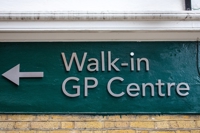
Collective learning as a fundamental tool for innovation: comparing Silicon Valley with Sophia Antipolis
With the advent of the digital economy, firms need more complex technologies and capabilities to succeed. They have to be highly innovative to attract customers and to reduce costs. This is especially the case for high-tech companies, which have to make significant investments, often in partnership with others. That is why innovation is becoming an increasingly collective process, involving dealings with other firms. Not surprisingly, many high-knowledge companies cluster together, exemplified by Silicon Valley. Why is innovation so successful in the Valley? To provide an answer, this article makes a broad-based comparison with Sophia Antipolis, a high-tech district on France’s Cote-d´Azur.
The conditions for collective learning
Collective learning describes a process which results in innovations that benefit companies located in the same cluster. In the context of globalisation and the shift towards knowledge-driven economies, collective learning confers a regional competitive advantage. In particular, collective learning enables start-ups and small firms that lack the scale and the funds to invest in R&D to pursue radical innovation, generating economic growth and jobs in the region.
Collective learning depends on continuous knowledge transfer among companies belonging to the local cluster. This is made possible by the movement of labour, both within the cluster and internationally, and by the start-ups and spin-outs from universities, research centres and existing companies. Interactions between firms facilitate collective learning, especially when they establish close ties with their suppliers and clients.
The relationships between venture capitalists (VCs) and companies also play a role. By helping to found start-ups, VCs transmit the knowledge they have gained to entrepreneurs.
Another path for collective learning is the “cafeteria effect”, which comes from networking and the informal exchange of ideas, usually over a cup of coffee.
So, what about these conditions in Sophia Antipolis?
Sophia Antipolis history and development
The Sophia Antipolis Park is situated on the French Riviera, the Côte d’Azur, between Nice and Antibes. It started life in 1969 as a private greenfield initiative for cross-fertilisation between research and industry[1]. However, financial constraints led to it becoming a public project. Under the leadership of regional and local authorities, Sophia Antipolis gradually evolved in the 1970s and 1980s into an international commercial venture. Multinational corporations such as Rohm & Haas France and Dow Chemical, and large French firms such as Air France and France Télécom, set up administrative or R&D units in the area[2]. Two major areas of activity duly emerged – information and communications technology (ICT) and life sciences.
The shift towards an internally-driven process of development emerged only in the 1990s, as a crisis in the ICT industry prompted most multinationals to scale back their operations at Sophia Antipolis. A number of factors helped sustain Sophia Antipolis after the crisis, including:
- the depth of the local labour pool, with skill levels above the national average, and higher levels of national and international migration than other French regions;
- a conducive environment for interactive learning, supported by several research institutions and universities, principally the University of Nice;
- R&D units of large established companies being replaced by local R&D entrepreneurs; and
- the growth of clubs and associations promoting networking in the region[3].
There is a general consensus that contemporary Sophia Antipolis is a good example of how people from different sectors and backgrounds can come together and collaborate[4].
Nevertheless, problems persist. For example, Sophia Antipolis relies heavily on ICT. Employment related to ICT jumped 5.6% a year from 2010 to 2013, outstripping the national average growth rate of 1%. By contrast, in professional, scientific and technical activities, Sophia Antipolis lagged behind.
Collaboration remains a feature of Sophia Antipolis, but active mistrust persists between large firms and research institutions[5]. More entrepreneurial outfits prefer to work with small firms rather than with bigger ones: most of the park’s small firms limit their dealings with larger firms to sub-contracting and formal relationships, but not informal information sharing. More broadly, informal networks outside the workplace are lacking and venture capital remains insufficient[6].
The evolution of Sophia Antipolis is unusual in that it was only late in the park’s development that an innovative, knowledge-sharing environment emerged[7]. It began as a planned agglomeration, rather than as the product of natural business interactions. And the relatively late arrival of research institutions and universities is uncommon. It is likely that such factors continue to threaten the park’s long-term sustainability as a high-technology innovation cluster.
Silicon Valley history and development
Scholars still debate whether Silicon Valley, outside San Francisco, dates back to the origins of Stanford University in 1891, the establishment of Hewlett-Packard in 1939, or the birth of the semiconductor industry in 1955.
Throughout its history, Silicon Valley has fostered a tolerance for failure, enabling the emergence of a counter-culture that encourages experimentation and speculation[8]. It has developed a robust, complex ecosystem of universities, large laboratories, major companies, VC firms, investment banks, and consulting and recruitment firms. This eclectic mix has spawned start-ups including Oracle, Apple and Yahoo. Close ties among engineers, researchers and VCs are critical to foster innovation and entrepreneurship[9]. People usually live near each other and meet in coffee shops and bars, strengthening these relationships. These factors have made Silicon Valley a highly competitive region with a broad base of knowledge, technology and capabilities that enables it to respond to shocks and shifts in trends[10].
Not surprisingly, the Valley’s labour force is sophisticated. The highly skilled make up 45.1% of the total compared with the national average of 28.2%. Silicon Valley also attracts more workers from overseas and elsewhere in the US than California as a whole.
VC and small-business funding have also played an important role in making Silicon Valley a highly competitive region. VC investment in Silicon Valley accounted for more than a quarter of total US venture capital investment in the early 2010s, and more than half of California’s[11].
The magic of Silicon Valley is its entrepreneurial culture. Start-ups and venture capital play key roles. Informal encounters outside work foster trust and encourage the exchange of ideas. Together with the high mobility of the labour force, these factors promote collective learning and help explain why Silicon Valley is such a successful high-tech cluster.
So, what do we learn about Silicon Valley and Sophia Antipolis?
Many efforts have been made to replicate Silicon Valley. Although Sophia Antipolis is not a failure, it has not harnessed the synergies that collective learning depends on as successfully as Silicon Valley.
Differences in the origins of the two clusters might be one explanation. Unlike the Valley, Sophia Antipolis did not spring up spontaneously. Start-ups have been slow and confined to the ICT sector. The life sciences cluster in Sophia Antipolis is still dominated by multinationals with few links between them. Even in the ICT sector the transfer of knowledge remains elusive, especially between firms of different size, and there are no information-sharing “cafeteria effects”. And there appears to be a palpable mistrust between large firms and research institutions.
Perhaps these shortcomings can be traced to the original conception of Sophia Antipolis as a technology park, rather than as somewhere to live and socialise. This separation between work and leisure has persisted down the years.
By contrast, Silicon Valley is distinguished by the spin-offs and start-ups it constantly produces thanks to its ethos of entrepreneurship. University and professional ties connect researchers, VCs and engineers, cementing friendships. There are strong “cafeteria effects”, which help to build trust and collaboration, and by a work/life balance made possible because people live and work in the same place.
Another difference can be found in the labour force. In Silicon Valley, it is global. But the people who work in Sophia Antipolis are mainly local, or from the EU. The result is greater circulation, exchange and deployment of new ideas in the Valley than on the French Riviera.
The role of investment banks and VCs is also critical to understanding the differences in collective learning between Sophia-Antipolis and Silicon Valley. As well as providing funds, they pass on to start-ups their accumulated knowledge of why some businesses succeed and others fail. Such expertise is conspicuous by its absence in Sophia Antipolis, which helps explain the dominance of very small firms and the slow birth rate of start-ups next to Silicon Valley.
[1] Longhi, C., & Quéré, M. (1993). Innovative networks and the technopolis phenomenon: the case of Sophia-Antipolis. Environment and Planning C: Government and Policy, 11(3), 317-330 and Longhi, C. (2002). From exogenous to endogenous local development: the cases of the Toulouse and Sophia Antipolis technopoles. In Complexity and Industrial Clusters (pp. 213-237). Physica-Verlag HD.
[2] Quéré, M. (2007). Sophia-Antipolis as a'reverse'science park: from exogenous to endogenous development. Applied evolutionary economics and economic geography, 48-66 and Fondation Sophia Antipolis. (2009). Sophia Antipolis: Rétrospective 1969 – 2009. Retrieved from the Fondation Sophia Antipolis website: https://www.sophia-antipolis.org.
[3] Parker, R. (2010). Evolution and change in industrial clusters: An analysis of Hsinchu and Sophia Antipolis. European Urban and Regional Studies, 17(3), 245-260.
[4] Ter Wal, A. L. (2013). Cluster emergence and network evolution: a longitudinal analysis of the inventor network in Sophia Antipolis. Regional Studies, 47(5), 651-668.
[5] Cooke, P. (2001). From technopoles to regional innovation systems: the evolution of localised technology development policy. Canadian Journal of Regional Science, 24(1), 21-40 and Moensted, M. (2007). Strategic networking in small high tech firms. International Entrepreneurship and Management Journal, 3(1), 15-27.
[6] Wired. (2000). The World’s Venturing Hot-Spots. Retrieved from the Wired website: https://www.wired.com
[7] Keeble, D. and Wilkinson, F. (1999). Collective Learning and Knowledge Development in the Evolution of Regional Clusters of High Technology SMEs in Europe. Regional Studies, 33 (4), 295- 303.
[8] Isaak, R. (2009). From collective learning to Silicon Valley replication: The limits to synergistic entrepreneurship in Sophia Antipolis. Research in International Business and Finance, 23(2), 134-143.
[9] Saxenian, A. (1994). Regional networks: industrial adaptation in Silicon Valley and route 128.
[10] Van Looy, B., Debackere, K., & Andries, P. (2003). Policies to stimulate regional innovation capabilities via university-industry collaboration: an analysis and an assessment. R&D Management, 33(2), 209-229.
[11] Silicon Valley Community Foundation. (2012). Index of Silicon Valley 2012 Report. Retrieved from the Silicon Valley Community Foundation website: https://www.siliconvalleycf.org/



